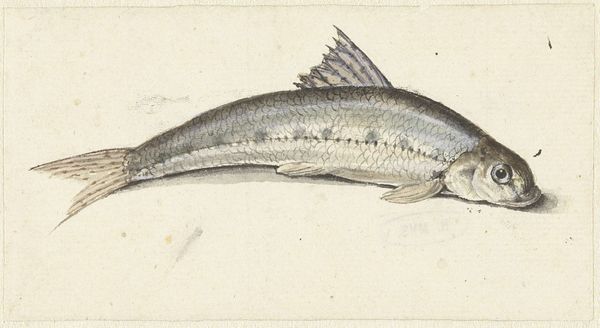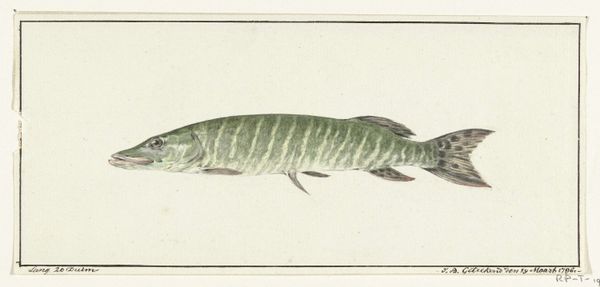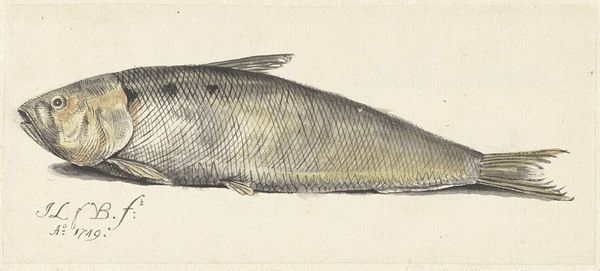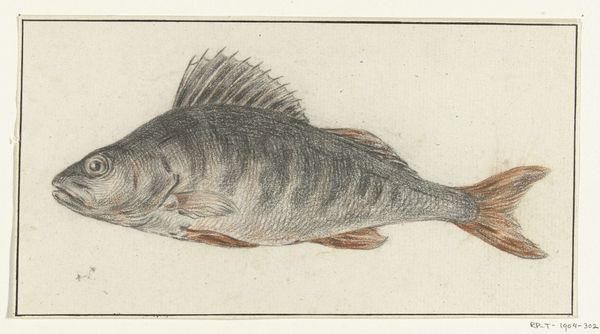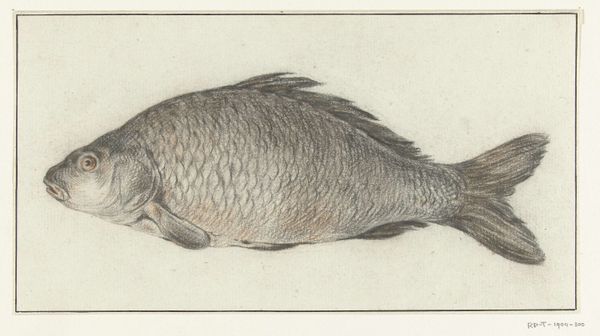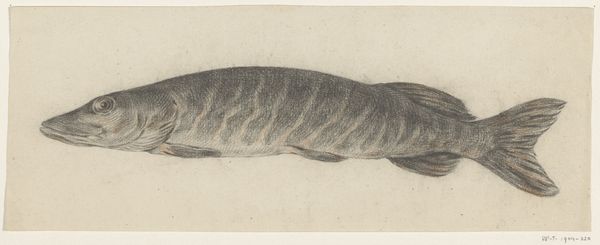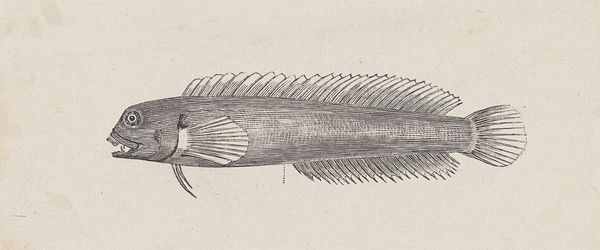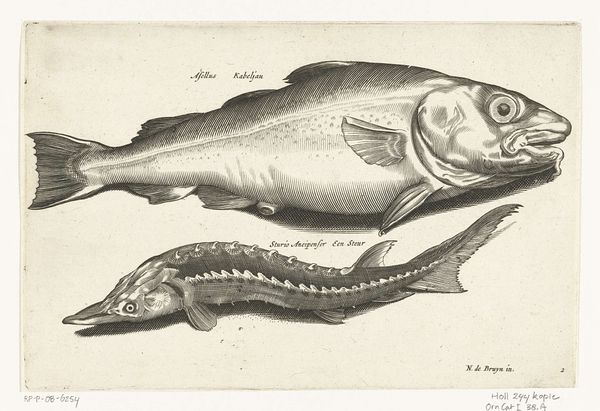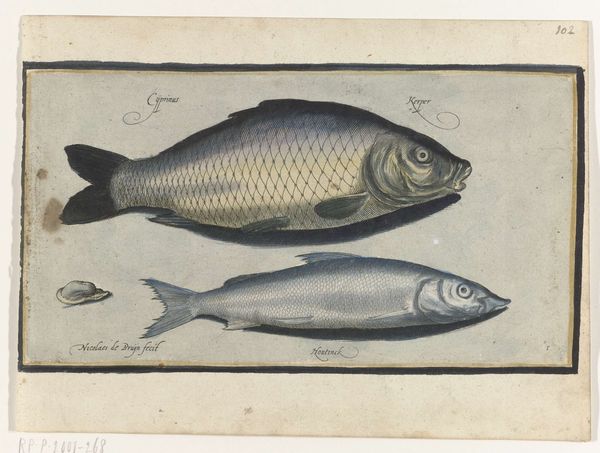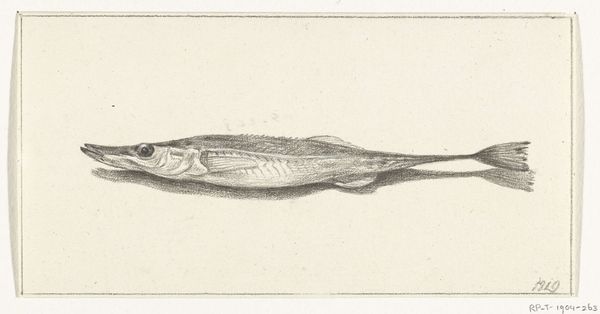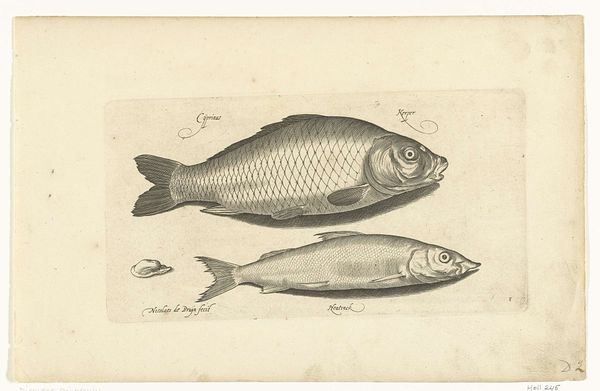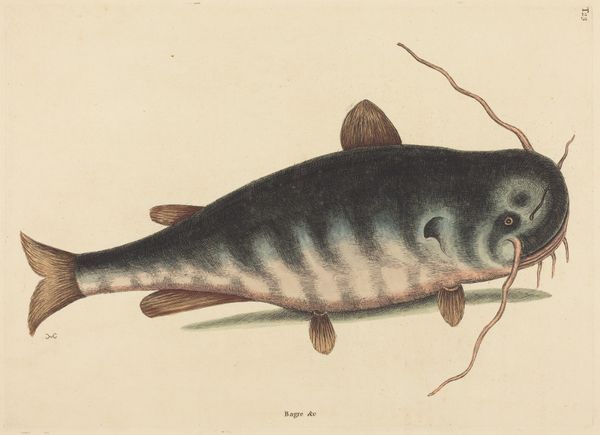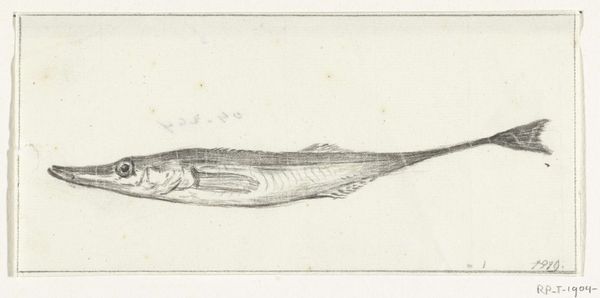
drawing, watercolor, pencil
#
drawing
#
pencil sketch
#
watercolor
#
pencil drawing
#
pencil
#
watercolour illustration
#
genre-painting
#
watercolor
#
realism
Dimensions: height 101 mm, width 378 mm
Copyright: Rijks Museum: Open Domain
Curator: Here we have a drawing titled "Snoek, met twee inkepingen op de rug," or "Snoek, with two notches on its back." It's rendered in pencil and watercolor, and the Rijksmuseum dates it somewhere between 1775 and 1833. Editor: My first impression is one of quiet stillness. There's something melancholic about the solitary fish depicted on this paper; it's clinical yet also vulnerable, like an object of study, not something vibrant and alive. Curator: It's interesting that you pick up on the vulnerability. Drawings like these were often commissioned as part of larger scientific surveys. The depiction of nature was deeply implicated in colonial expansion, so that objectification isn't accidental. Editor: Absolutely. And the two notches! They're so curious. They invite a certain reading, don’t they? Like a brand or even wounds inflicted on this creature—indelible marks that reflect, perhaps, exploitation. I find that connection really compelling. The entire symbolic load speaks to a larger narrative about power and exploitation. Curator: Indeed. In this era, a growing natural science became intrinsically tied to classification. Consider the Enlightenment project. Organizing knowledge became a crucial part of maintaining the hierarchical structure of society. These precise depictions served to reinforce those boundaries, legitimizing both the subjugation of the natural world and, by extension, various human populations. Editor: And you see how its eye, alone, pierces through this quiet facade of realism. It lends it humanity, creating emotional resonance even within that scientific framing. Curator: Precisely. That careful realism, combined with what might read as human-caused imperfections on its body, compels us to see the consequences of specific political and cultural structures, bringing into view this intersection of humanity and nature under colonial dominance. Editor: Thank you; viewing it this way really unlocked several new layers of thought for me. Curator: Yes, thinking about it intersectionally truly shows us how multifaceted a work like this can be.
Comments
No comments
Be the first to comment and join the conversation on the ultimate creative platform.

